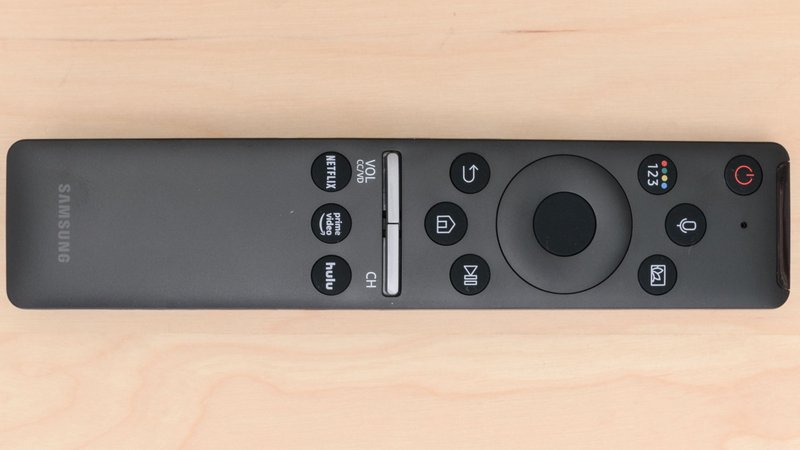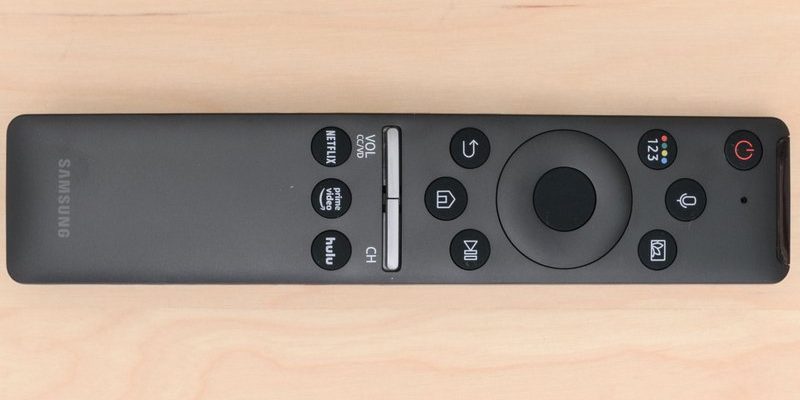
It sounds simple, right? A TV remote is a TV remote—press button, magic happens. But with all the different Samsung models out there, not to mention tech terms like “sync,” “pair,” or “reset,” things can get confusing fast. Don’t worry, you’re not alone in feeling lost. TV remotes (especially the ones from Samsung) come in all shapes, styles, and levels of “smarts.” Let me explain where the magic happens—and where it can all go hilariously wrong.
Types of Samsung TV Remotes: A Crash Course
Not all Samsung remotes are created equal. It’s a bit like the difference between a flip phone and the latest smartphone—they both make calls, but try playing Candy Crush on a flip phone and you’ll see what I mean. Over time, Samsung has released several remote types:
- Standard IR Remotes: These are your classic, old-school remotes. They use infrared (IR) signals. Basically, you have to point them directly at the TV, and any obstacle (a dog, a pizza box, you name it) can block the signal. Simple, but effective—for older TVs, anyways.
- Smart Remotes (a.k.a. Samsung One Remote): These are the newer, sleeker models, often bundled with Samsung smart TVs since about 2016. They’re Bluetooth-enabled (sometimes with IR backup), letting you control your TV even if the remote is pointed at the ceiling. Some have voice activation, touchpads, or shortcuts to streaming apps.
- Universal Remotes: Not Samsung-exclusive, but worth mentioning. These can be programmed to control a bunch of devices—maybe your TV, soundbar, and those fairy lights you refuse to take down after Christmas.
So, when someone asks, “does a Samsung TV remote work with smart TVs?” you need to know what kind of remote you’re dealing with—and how “smart” your TV actually is.
Compatibility: Which Samsung Remotes Work With Smart TVs?
Here’s the thing: just because it says Samsung, doesn’t mean it’ll play nice with every Samsung smart TV. The real secret sauce is in the technology the remote uses to “talk” to the television. Think of it like speaking a different language. If your TV is expecting Bluetooth signals but your remote only speaks IR, it’s a no-go.
Samsung’s smart remotes—the ones that come with their newer smart TVs—are designed to pair via Bluetooth. They sync up with the TV during initial setup (usually pretty seamless, unless your batteries are dead or the remote is out of range). These remotes can usually control any Samsung smart TV made within the same “era”—generally from 2016 onward. If your TV and remote are from wildly different timelines (say, a remote from 2012 and a TV from 2022), they probably won’t sync, because the code inside each device has changed.
On the other hand, standard IR remotes stand a much better shot at working across different models, because IR commands are pretty basic and haven’t changed much. So, if you’ve got an old-school Samsung IR remote, there’s a decent chance it can at least handle basic functions on a smart TV—like power, volume, and channel switching. But don’t expect miracles: more advanced features (like launching Netflix or activating voice search) won’t work.
Here’s a tip: if you want full functionality on a Samsung smart TV, you’ll want a remote from the same generation, ideally the exact model that came with your TV.
How to Pair or Sync a Samsung Remote With Your Smart TV
Pairing your Samsung smart remote with your TV is usually a one-and-done process, but sometimes tech decides to be moody. Here’s the basic “code” to get them talking:
- First, make sure your remote has fresh batteries. Seriously—old batteries cause more remote woes than you’d think.
- Next, point the remote toward your TV. On most Samsung smart remotes, press and hold the Return and Play/Pause buttons together for 3–5 seconds.
- Your TV should display a pairing message. If it doesn’t, check for obstacles or try a soft TV reset (hold the power button on the TV for 10 seconds).
- For older IR remotes, no pairing is needed—just point and press. If nothing happens, you’re probably out of luck on compatibility.
If you’ve tried everything and it still won’t pair, there could be a problem with the remote’s Bluetooth, a firmware mismatch, or even a hardware issue. Sometimes, a simple reset (unplugging the TV for a minute and rebooting) does wonders.
Troubleshooting Samsung Remote Problems
Remotes are like that one friend who always loses their phone—trouble just finds them. Here’s a quick guide to some classic issues and how to fix them:
- Remote won’t pair or sync: Try fresh batteries, check for obstructions, and restart your TV. Sometimes, TVs get “stuck” waiting for another signal.
- Some buttons don’t work: If only basic controls function, you might be using an IR remote that’s not fully compatible with smart TV features.
- Laggy response: Bluetooth interference can cause delays. Keep other electronics at bay, or try moving the TV away from Wi-Fi routers.
- Remote lost connection after update: Firmware updates can sometimes “forget” pairings. Re-pair the remote using the method above.
In my own apartment, I once spent thirty minutes resetting both my TV and remote, only to realize my cat had knocked out one of the batteries. Tech can be tricky—but sometimes the fix is wonderfully low-tech.
Universal Remotes vs Samsung Remotes: Should You Switch?
Let’s be honest: even though Samsung remotes are cool, they’re not indestructible (mine barely survived my toddler nephew). When your remote is truly lost or broken, should you stick with Samsung, or go universal?
Universal remotes are the Swiss Army knives of the remote world. Set them up right, and they’ll control your TV, soundbar, streaming box, and more. The setup process usually involves entering a “code” for your device (the remote’s manual will have a long list—don’t worry, you only need one). They use IR by default, so advanced Bluetooth features on your smart TV might not work.
Samsung’s own replacement remotes—especially their “One Remote” models—are guaranteed to sync with all features of your Samsung smart TV. If you love having voice search, app shortcuts, or easy device pairing, stick with the real deal.
My take? If you use your TV for basic stuff (volume, channels, power), a universal remote is fine and can even simplify your gadget pile. But for all the smart features, it’s worth getting an official Samsung remote—yes, even if it costs a bit more.
Common Compatibility Scenarios: Which Combinations Work?
This is where it gets fun. Let’s run through a few likely situations you might find yourself in:
| Remote Type | TV Type | Will It Work? | Notes |
| Samsung IR Remote (old) | Samsung Smart TV (new) | Sometimes | Basic controls only; no smart functions |
| Samsung Smart Remote (Bluetooth) | Samsung Smart TV (from same era) | Yes | Full compatibility |
| Samsung Smart Remote | Samsung TV (non-smart, older model) | No | Won’t pair—different tech |
| Universal Remote | Samsung Smart TV | Partially | May not support voice or app shortcuts |
| Aftermarket Samsung “compatible” remote | Samsung Smart TV | Varies | Read the reviews carefully! |
As you can see, the answer to “does Samsung TV remotes work with smart TVs?” isn’t always a flat yes or no—it depends on the type, age, and features you expect.
Tips for Choosing the Right Samsung TV Remote
Not sure which remote to buy or keep? Here are some pointers that’ll save you time, money, and a lot of frustration:
- Check your TV model number. This info is usually on the back of your TV or in the settings menu. Once you’ve got it, search for remotes that list compatibility with your exact model.
- Match technology. If your TV uses Bluetooth for its remote, don’t try to use a basic IR version (and vice versa). Look for product details that mention Bluetooth, “One Remote,” or IR.
- Consider your habits. Do you use voice search, quick access to Netflix, or other smart features? Only a smart remote will give you all that. For bare-bones functionality, an IR remote or universal is fine.
- Watch out for “compatible” third-party remotes. Some work great, others are more “meh”—always check reviews before buying.
My best advice? When in doubt, check the Samsung website or call support. They’ll help you find the exact remote you need—without playing remote roulette.
Why Remote Compatibility Still Matters
It’s easy to assume remotes are interchangeable, but behind the scenes, a lot of things can go wrong if you mix and match. Not having the right remote can make it impossible to access key settings, update your apps, or even reboot when things freeze up. If you’re invested in using all your TV’s features (think: streaming, voice, smart home stuff), remote compatibility isn’t just convenient—it’s essential.
And let’s not forget, smart TVs today are basically computers with extra-large screens. As technology advances, your trusty old remote might not keep up. If a remote can’t pair or code properly with your TV, you’ll miss out on what makes a smart TV “smart.”
So, do Samsung TV remotes work with smart TVs? Here’s the honest answer: sometimes yes, sometimes no—it depends on the tech “language” your devices speak. If you stick with remotes designed for your TV’s era and type, things are usually smooth sailing. Want to unlock all the smart stuff? Get a matching Samsung smart remote. Don’t care much for bells and whistles? A universal remote can do the trick for simple commands.
The world of remotes can feel like a wild jungle, but once you know what’s under the hood, it’s easy to find your path. And hey, if all else fails, there’s always the Samsung SmartThings app on your phone (but that’s a story for another day). Good luck with your TV-remote matchmaking—may your next binge session be completely interruption-free!
